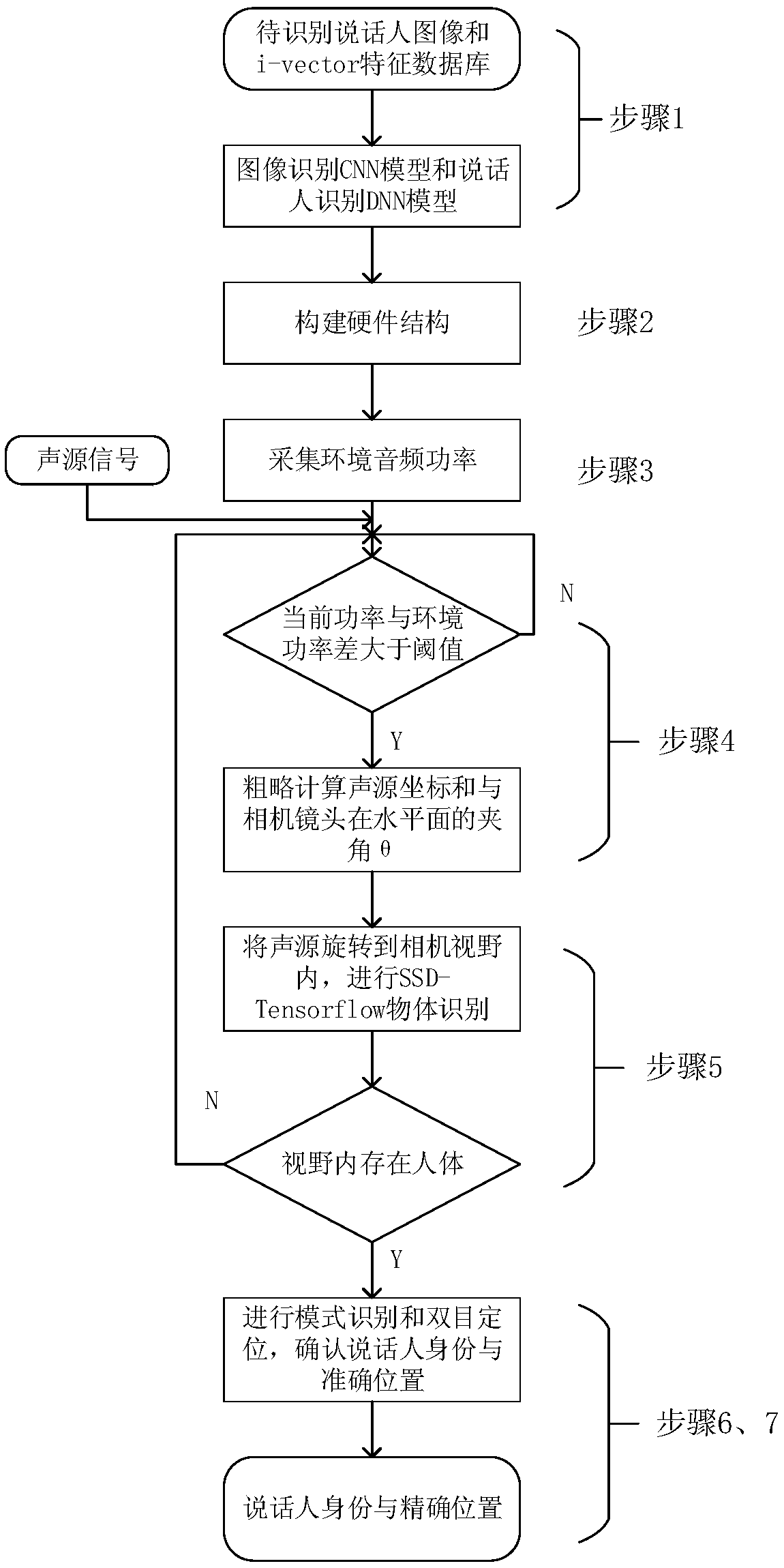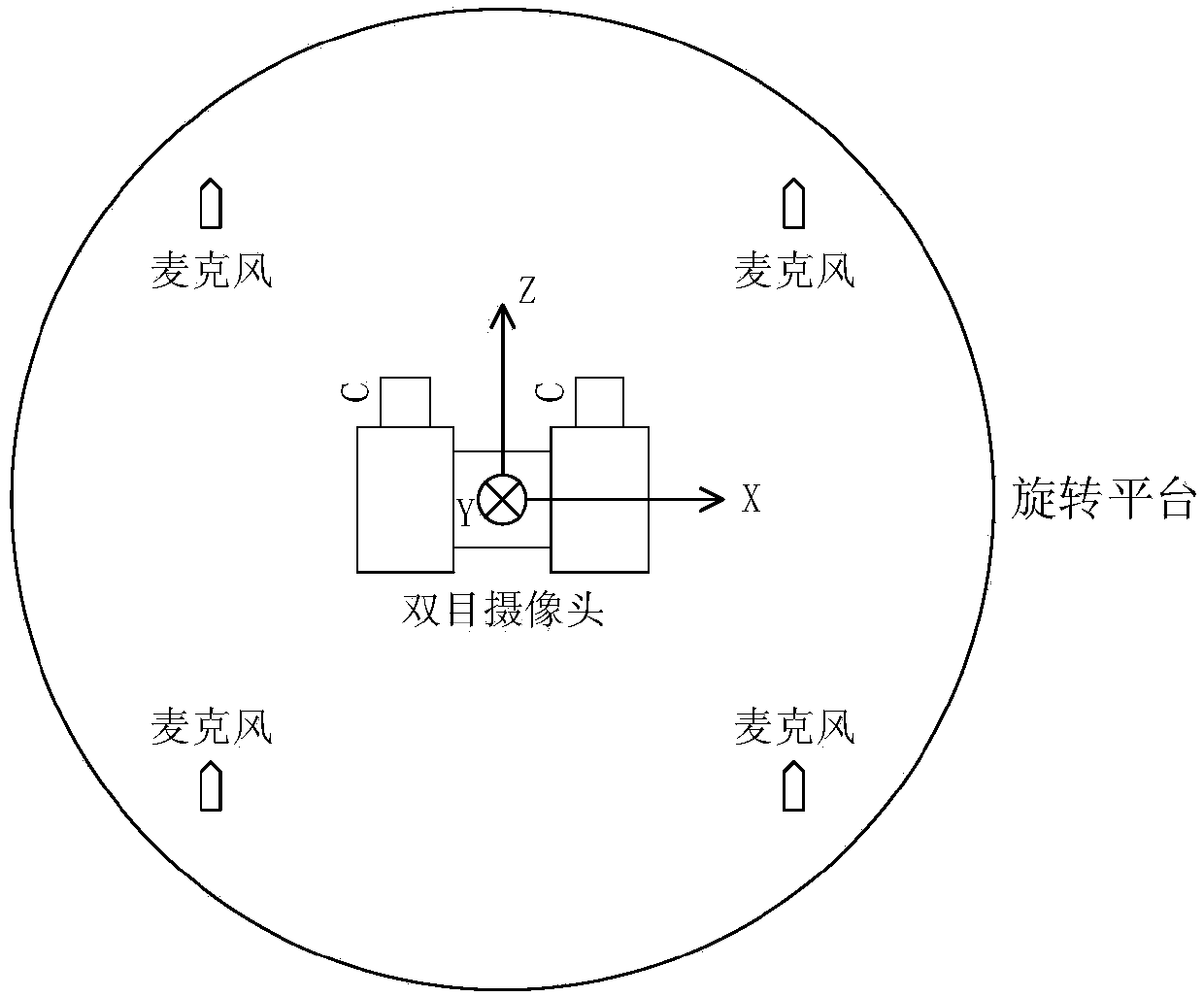Microphone array and binocular camera-based speaker positioning and recognizing method
A technology of binocular camera and microphone array, applied in the directions of positioning, character and pattern recognition, image analysis, etc., can solve the problems of limited shooting area, increased hardware cost and software resource occupation, etc., to reduce software overhead, accurate and reliable recognition results, The effect of high refresh rates
- Summary
- Abstract
- Description
- Claims
- Application Information
AI Technical Summary
Problems solved by technology
Method used
Image
Examples
Embodiment Construction
[0021] Such as figure 1 As shown, a speaker localization and recognition method based on a microphone array and a binocular camera includes the following steps:
[0022] (1) Set up the microphone array, the binocular camera and the rotating platform where the binocular camera is located, respectively build the target face and i-vector database and train the image-based face recognition model and the audio-based speaker recognition model;
[0023] (2) Fix the binocular camera and microphone array on the rotating platform, and calculate the confidence w of the face recognition model and the speaker recognition model in the current environment V with w A ;
[0024] (3) The microphone array first records a section of audio, and calculates its average power as the ambient power;
[0025] (4) When the microphone array detects that the difference between the current power and the ambient power is greater than a certain threshold, and the duration is greater than a certain threshol...
PUM
 Login to View More
Login to View More Abstract
Description
Claims
Application Information
 Login to View More
Login to View More - R&D
- Intellectual Property
- Life Sciences
- Materials
- Tech Scout
- Unparalleled Data Quality
- Higher Quality Content
- 60% Fewer Hallucinations
Browse by: Latest US Patents, China's latest patents, Technical Efficacy Thesaurus, Application Domain, Technology Topic, Popular Technical Reports.
© 2025 PatSnap. All rights reserved.Legal|Privacy policy|Modern Slavery Act Transparency Statement|Sitemap|About US| Contact US: help@patsnap.com


